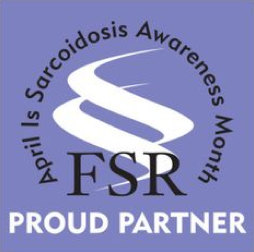Arthritis is very common but is not well understood. Actually, “arthritis” is not a single disease; it is an informal way of referring to joint pain or joint disease. There are more than 100 different types of arthritis and related conditions. People of all ages, sexes and races can and do have arthritis, and it is the leading cause of disability in America. Nearly 53 million adults and 300,000 children have some type of arthritis. It is most common among women and occurs more frequently as people get older.
Common arthritis joint symptoms include swelling, pain, stiffness and decreased range of motion. Symptoms may come and go. They can be mild, moderate or severe. They may stay about the same for years, but may progress or get worse over time. Severe arthritis can result in chronic pain, inability to do daily activities and make it difficult to walk or climb stairs. Arthritis can cause permanent joint changes. These changes may be visible, such as knobby finger joints, but often the damage can only be seen on X-ray. Some types of arthritis also affect the heart, eyes, lungs, kidneys and skin as well as the joints.
There are different types of arthritis:
Degenerative Arthritis
Osteoarthritis is the most common type of arthritis. When the cartilage – the slick, cushioning surface on the ends of bones – wears away, bone rubs against bone, causing pain, swelling and stiffness. Over time, joints can lose strength and pain may become chronic. Risk factors include excess weight, family history, age and previous injury (an anterior cruciate ligament, or ACL, tear, for example).
When the joint symptoms of osteoarthritis are mild or moderate, they can be managed by:
- balancing activity with rest
- using hot and cold therapies
- regular physical activity
- maintaining a healthy weight
- strengthening the muscles around the joint for added support
- using assistive devices
- taking over-the-counter (OTC) pain relievers or anti-inflammatory medicines
- avoiding excessive repetitive movements
If joint symptoms are severe, causing limited mobility and affecting quality of life, some of the above management strategies may be helpful, but joint replacement may be necessary.
Osteoarthritis can prevented by staying active, maintaining a healthy weight, and avoiding injury and repetitive movements.
Inflammatory Arthritis
A healthy immune system is protective. It generates internal inflammation to get rid of infection and prevent disease. But the immune system can go awry, mistakenly attacking the joints with uncontrolled inflammation, potentially causing joint erosion and may damage internal organs, eyes and other parts of the body. Rheumatoid arthritis and psoriatic arthritis are examples of inflammatory arthritis. Researchers believe that a combination of genetics and environmental factors can trigger autoimmunity. Smoking is an example of an environmental risk factor that can trigger rheumatoid arthritis in people with certain genes.
With autoimmune and inflammatory types of arthritis, early diagnosis and aggressive treatment is critical. Slowing disease activity can help minimize or even prevent permanent joint damage. Remission is the goal and may be achieved through the use of one or more medications known as disease-modifying antirheumatic drugs (DMARDs). The goal of treatment is to reduce pain, improve function, and prevent further joint damage.
Infectious Arthritis
A bacterium, virus or fungus can enter the joint and trigger inflammation. Examples of organisms that can infect joints are salmonella and shigella (food poisoning or contamination), chlamydia and gonorrhea (sexually transmitted diseases) and hepatitis C (a blood-to-blood infection, often through shared needles or transfusions). In many cases, timely treatment with antibiotics may clear the joint infection, but sometimes the arthritis becomes chronic.
Metabolic Arthritis
Uric acid is formed as the body breaks down purines, a substance found in human cells and in many foods. Some people have high levels of uric acid because they naturally produce more than is needed or the body can’t get rid of the uric acid quickly enough. In some people the uric acid builds up and forms needle-like crystals in the joint, resulting in sudden spikes of extreme joint pain, or a gout attack. Gout can come and go in episodes or, if uric acid levels aren’t reduced, it can become chronic, causing ongoing pain and disability.
Diagnosing Arthritis
Arthritis diagnosis often begins with a primary care physician, who performs a physical exam and may do blood tests and imaging scans to help determine the type of arthritis. An arthritis specialist, or rheumatologist, should be involved if the diagnosis is uncertain or if the arthritis may be inflammatory. Rheumatologists typically manage ongoing treatment for inflammatory arthritis, gout and other complicated cases. Orthopaedic surgeons do joint surgery, including joint replacements. When the arthritis affects other body systems or parts, other specialists, such as ophthalmologists, dermatologists or dentists, may also be included in the health care team.

